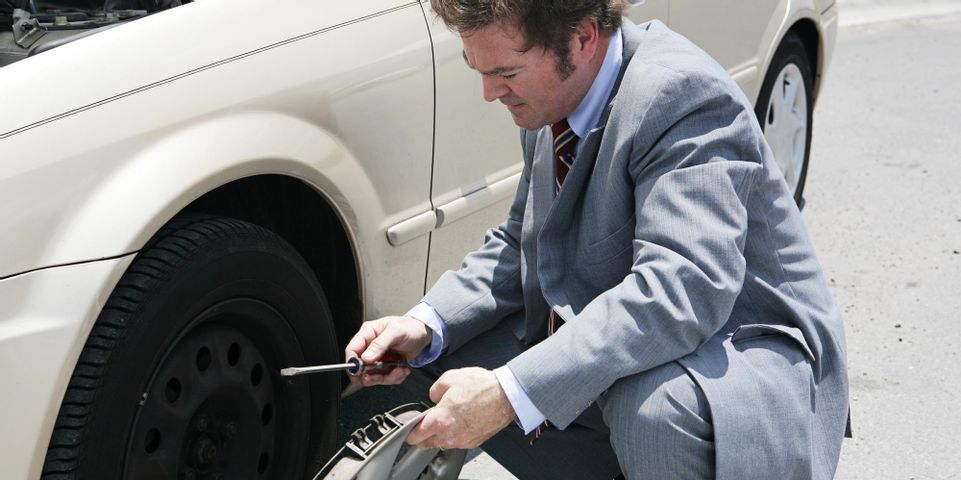
No driver wants to get stranded with a flat tire. Not only does this mean investing in tire repair or replacement, but it can also be a major inconvenience and even a safety concern. Some flat tires are unavoidable, but there are some steps drivers can take to lessen their chances. Understanding the most common hazards is the first step in avoiding them.
4 Reasons People Get Flat Tires
1. Road Hazards
 Sharp objects, like nails, broken bottles, or debris, can puncture tires if you drive over them. Road conditions, like potholes and curbs, can increase pressure on the outside of the tire, which may lead to blowouts or gradual deflation if the tire cannot withstand that amount of exterior pressure. The best way to avoid this is to keep an eye on the road ahead and steer clear of any visible issues. If you have to drive on rough roads, slow down so that your tires can more easily absorb the impact.
Sharp objects, like nails, broken bottles, or debris, can puncture tires if you drive over them. Road conditions, like potholes and curbs, can increase pressure on the outside of the tire, which may lead to blowouts or gradual deflation if the tire cannot withstand that amount of exterior pressure. The best way to avoid this is to keep an eye on the road ahead and steer clear of any visible issues. If you have to drive on rough roads, slow down so that your tires can more easily absorb the impact.
2. Wear & Tear
Most tire damage actually occurs over time, rather than all at once. As the tread wears down on your tires, the surface becomes more vulnerable to damage from road hazards. Tread is the rubber track that covers the exterior to provide extra traction and protection, so hazards that hit this part of the tire won’t cause severe damage.
Regular tire rotations and alignment checks can help prolong their lifespan by ensuring the tread wears down evenly across each tire so that there aren’t serious bald spots. However, you’ll likely need to replace them about once every 25,000 to 50,000 miles regardless.
3. Leaking Valve Stems
The valve stem is the part of your tire that you use to fill it with air. Over time, this part can break down or corrode due to exposure to moisture and road salts. This can break the seal and allow some air to escape.
This often results in gradual deflation, but major damage could lead to a fully flat tire. Have this part inspected during vehicle service to avoid this issue.
4. Improper Inflation
Overinflated tires are more likely to blow out because of increased pressure inside the tire. This is especially common in extreme heat since warm air expands. Under-inflated tires are more likely to come into contact with sharp objects or curbs because more of the surface contacts the road as you drive. Use a tire pressure gauge about once a month, making sure the levels fall into the air pressure range that’s recommended in your owner’s manual.
If you need tire repair or new tires to replace a flat, contact Phil’s Tire Shop in Saint Louis, MO. The tire store offers a full range of services to help drivers keep their tires in optimal condition, including tire rotations, patches, and even sensors. They also carry a wide selection of high-end used tires. Visit the website for a full list of services, or call (314) 544-3181 to request tire repair.
About the Business
Have a question? Ask the experts!
Send your question

